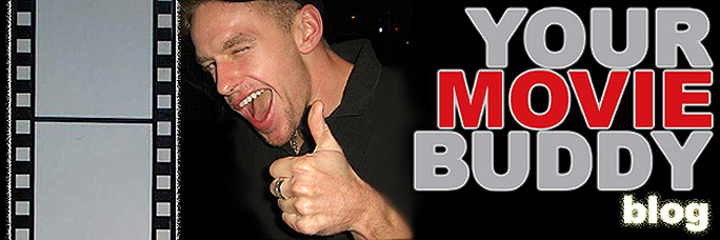 Countless other movies have given nods to Sunset at this point, including one of my all time favorites, Mike Nichols' HBO adaptation of Tony Kushner's play Angels in America. Kushner's Pulitzer Prize-winning prose is very postmodern (if I can still say that), reviving and referencing literature, politics and film that preceded the era it's responding to - the AIDS crisis of the 1980's. In addition to Sunset, Kushner either subtly or blatantly works a handful of other classic cinematic references into his story and dialogue, from Rosemary's Baby to The Wizard of Oz. Many of these are expressed in the words and actions of Angels' main character Prior Walter; like in an early scene where he informs his lover Louis that their cat has still not come home, and likens his morning experience to Shirley Booth's Oscar-winning role as Lola Delaney in Come Back, Little Sheba. While entertaining, the context of that scene meant nothing to me until I watched Sheba last month. Suddenly, it's all there: "floppy slippers, housecoat, curlers, can of Lil' Friskies," only I don't watch Prior Walter and think of Lola Delaney - I watch Lola Delaney and think of Prior Walter.
Countless other movies have given nods to Sunset at this point, including one of my all time favorites, Mike Nichols' HBO adaptation of Tony Kushner's play Angels in America. Kushner's Pulitzer Prize-winning prose is very postmodern (if I can still say that), reviving and referencing literature, politics and film that preceded the era it's responding to - the AIDS crisis of the 1980's. In addition to Sunset, Kushner either subtly or blatantly works a handful of other classic cinematic references into his story and dialogue, from Rosemary's Baby to The Wizard of Oz. Many of these are expressed in the words and actions of Angels' main character Prior Walter; like in an early scene where he informs his lover Louis that their cat has still not come home, and likens his morning experience to Shirley Booth's Oscar-winning role as Lola Delaney in Come Back, Little Sheba. While entertaining, the context of that scene meant nothing to me until I watched Sheba last month. Suddenly, it's all there: "floppy slippers, housecoat, curlers, can of Lil' Friskies," only I don't watch Prior Walter and think of Lola Delaney - I watch Lola Delaney and think of Prior Walter. Later, when Prior is confessing to Louis the details of his affliction with AIDS, he mocks Louis' insights about justice, saying "we who are about to die salute you." Imagine my surprise during my recent screening of 1950's All About Eve, when I hear Bette Davis' Margo Channing say precisely the same thing.
Later, when Prior is confessing to Louis the details of his affliction with AIDS, he mocks Louis' insights about justice, saying "we who are about to die salute you." Imagine my surprise during my recent screening of 1950's All About Eve, when I hear Bette Davis' Margo Channing say precisely the same thing. The Sunset reference takes place during one of the film's more notable sequences, wherein Prior channels Swanson in a dream. Seated before a mirror in full drag, he recites the immortal words, "I'm ready for my close-up, Mr. DeMille," which even at my first Angels viewing were culturally commonplace. But now, they register in the way Kushner intended them to...sort of. His character will always be the first variable in my version of that movie equation, even if it's chronologically incorrect.
The Sunset reference takes place during one of the film's more notable sequences, wherein Prior channels Swanson in a dream. Seated before a mirror in full drag, he recites the immortal words, "I'm ready for my close-up, Mr. DeMille," which even at my first Angels viewing were culturally commonplace. But now, they register in the way Kushner intended them to...sort of. His character will always be the first variable in my version of that movie equation, even if it's chronologically incorrect.All of this might seem painfully obvious, but it happens to me all the time. What makes Angels in America stand out is that rather than having one or two instances from my back-viewings return me to it, I've had over five. A lot of that comes from the richness of Kushner's material, as well as from the fact that all of these titles are not only part of American film iconography at large, but gay iconography in particular. Either way, seeing the originals at long last makes them and their tribute-payer that much more rewarding, finally putting a face to a name.
In closing I've provided a clip from one of Angels' quieter moments, in which Prior and Louis (in yet another dream sequence) dance to "Moon River" from the 1961 Audrey Hepburn vehicle Breakfast at Tiffany's (which I've just seen but first learned about from the 1995 Sandra Bullock vehicle The Net). Go figure.


1 comment:
I have experienced "Referential Reverse" many times. I viewed the Flintstones before I watched The Honeymooners when I first became aware of this phenomenon. But I still didn't give this idea much thought until reading this article! In my view it is thoughtful ways of pointing out the obvious (and not so obvious) such as this blog that keeps the stories/films alive. Very cool ... and great films as examples!
Post a Comment